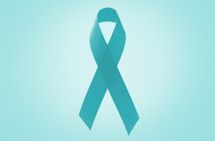
There is no denying that the following statistics are alarming. It is good to have the information if you are at all concerned. My sister recently died from Ovarian Cancer so I went and had as many tests as were recommended. All of my tests came back negative. I took my son to see a Martial Arts expert 2 weeks ago. He happened to mention that his wife was diagnosed with ovarian cancer 8 years ago! I do not know all of her details but he said she was fine now. Some will survive. Here are some basic highlights:
The American Cancer Society estimates that over 21,550 women will be diagnosed with ovarian cancer and an estimated 14,600 will die of the disease in the United States in 2009.
In the U.S., 1 in 71 women are at risk of getting invasive ovarian cancer during their lifetime.
The lifetime risk of developing invasive ovarian cancer and dying from it are 1 in 95.
Ovarian cancer causes more deaths than any other type of female reproductive cancer.
The overall five-year survival rate for ovarian cancer is 46% compared to over 89% for breast cancer.
Ovarian cancer survival rates have not improved as extensively as those of some other cancers that affect primarily women; for example, women diagnosed with breast cancer from 1975 to 1979 experienced a five-year survival rate of 75 percent and today this rate is 89%.
The risk of developing ovarian cancer increases with age and it is primarily diagnosed in post-menopausal women- about two-thirds of women diagnosed with the disease are 55 years or older.
The cause of the disease is unknown and it is often referred to as “the whispering disease” because the signs and symptoms are vague and often mimic other digestive and gastrointestinal disorders.
• Ovarian cancer at its early stage usually has no obvious symptoms or very subtle ones. Symptoms may include:
• persistent bloating or swelling
• pelvic or abdominal pain or pressure
• vague but persistent gastrointestinal upset such as indigestion, gas or nausea
• unexplained weight gain or loss, especially weight gain in the abdominal region without an increase in food intake
• feeling of fullness even after a light meal
• unexplained changes in bowel habits (constipation or diarrhea)
• frequency and/or urgency of urination in absence of an infection
• back or leg pain
• pain during intercourse
• menstrual irregularities
• ongoing fatigue
• abnormal post-menopausal vaginal bleeding
No comments:
Post a Comment